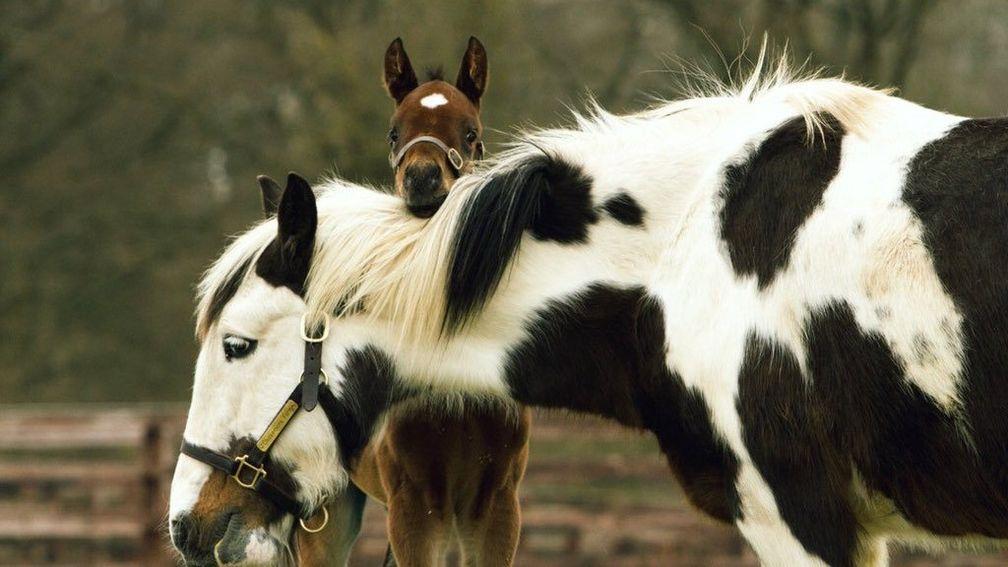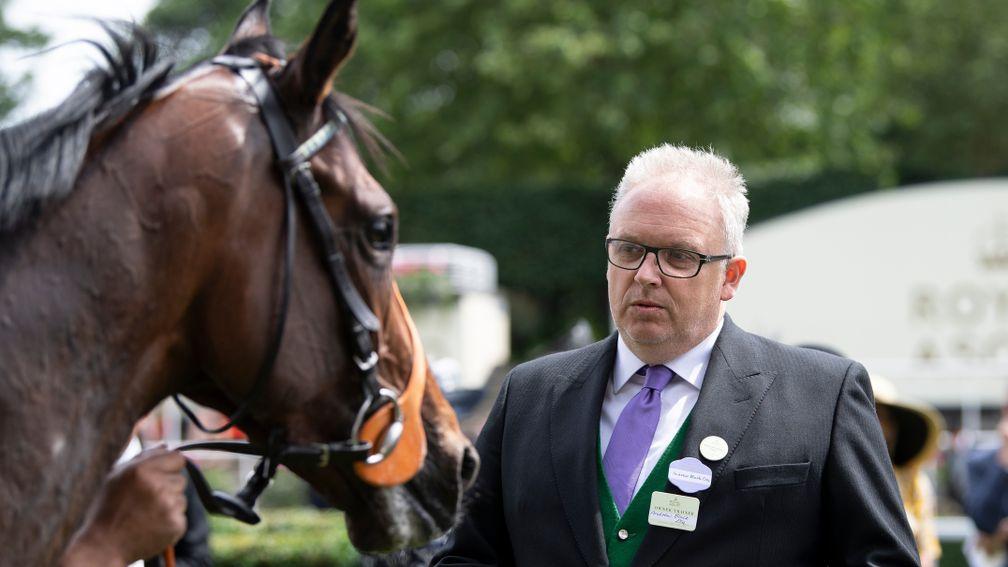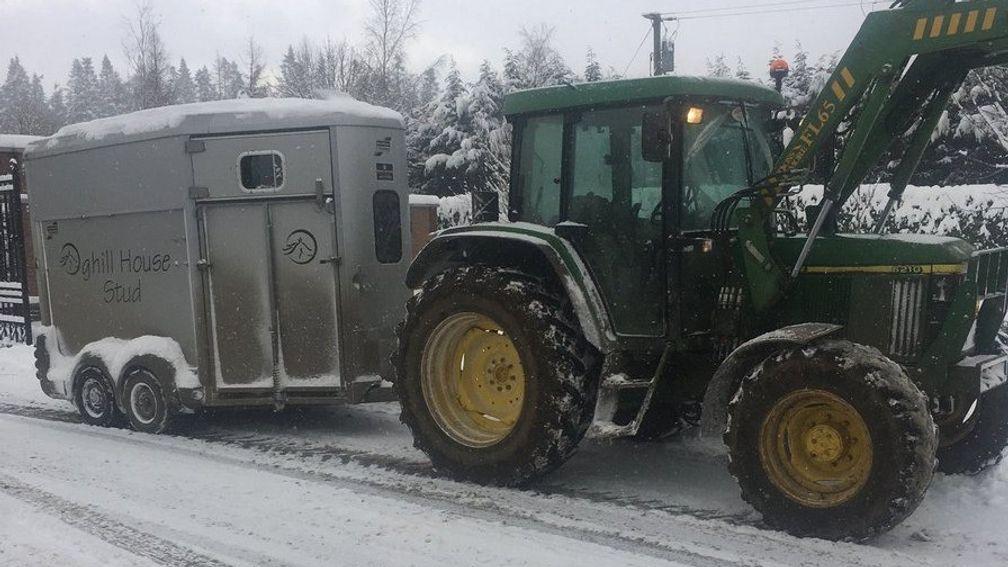From the emotional to the awe-inspiring: five surprising stories of 2018
Martin Stevens reviews some of the year's more unusual tales in bloodstock

A happy ending to a tragic tale
One tale in the bloodstock world this year in particular would make perfect material for a movie, featuring as it does an unconventional owner-breeder who experienced triumph and then tragedy with his star mare but was eventually dealt a happy ending on the biggest stage in racing.
Determined to do things his own way, Betfair founder Andrew Black had claimed Baldovina for just £17,000 after she finished third, beating only two horses home, in a Class 6 claimer at Lingfield in 2007. The daughter of Tale Of The Cat was retired to Black's Chasemore Farm in Surrey – after a brief spell hurdling with David Pipe – and produced as her second foal Ceiling Kitty, who was named after a popular internet meme and carried her breeder's silks to victory in the Queen Mary Stakes at Royal Ascot in 2012.

Ceiling Kitty eventually joined her dam at Chasemore Farm and her first two foals were the Listed winner Eartha Kitt and Listed fourth Formidable Kitt; so far so good. But catastrophe was just around the corner as the mare endured a horrific, and ultimately fatal, delivery of her third foal, a colt by Camelot, in 2016.
The foal himself only narrowly survived birth, having to be resuscitated six times that night. But he was nursed back to health and strengthened into the crack two-year-old Arthur Kitt, who in June paid the late Ceiling Kitty high tribute by also gaining victory at the royal meeting – in his case in the Chesham Stakes.
Tom Dascombe's charge, who carries the Chasemore Farm silks, also took second to Too Darn Hot in the Solario Stakes and was a creditable fourth in the Breeders' Cup Juvenile Turf.
"To lose such a treasured animal but then emerge with this little foal, it was almost like a phoenix from the flames," Black told the Racing Post earlier this year. "I've got a lot of emotion invested in this horse. I was never going to sell him because there are certain animals that you just can't look at in a financial way."
Rags-to-riches rise of Sandmason
Life can be tough for smaller operators in the stallion business, as they struggle to even find suitable recruits let alone sell nominations to them. But every now and again a rags-to-riches story comes around that shows that perseverance can pay off.
Sandmason's emergence as a top jumps sire this year despite his advancing years and general apathy from breeders will have inspired many of those beleaguered stud owners.
The 21-year-old son of Grand Lodge, a winner of the Hardwicke Stakes for Sir Henry Cecil in his racing heyday, had been acquired by Paul Rothwell of Lacken Stud in County Wexford in 2008 after several seasons standing in the southern hemisphere. But the transfer did not seem to excite other horsemen and Rothwell was left sending the stallion his own mares with little outside support.
Rothwell's faith was justified, as two Lacken Stud-bred sons of Sandmason struck at Grade 1 level at the major jumps festivals in the spring – Summerville Boy in the Supreme Novices' Hurdle at Cheltenham and Black Op in the Mersey Novices' Hurdle at Aintree.
Breeders might have been indifferent to Sandmason before, but they could not ignore that success from such small crops. So, having sired no foals in the previous two seasons, the stallion was inundated with 217 mares in the past breeding season.
“In the last few years I could've had a breeder standing at the end of my drive and told them we had Sandmason here, and they wouldn't have walked the few extra yards to look at him,” Rothwell reflected in the summer. “Now they're coming into the yard and telling me how good he is blah blah blah, and I just chuckle to myself. He was standing here for ten years and no one wanted to know!”
New landmarks for living legend Galileo
As has been noted on these pages this week, Galileo's domination of the stallion scene in 2018 was not quite as breathtaking as in previous years. He is set to secure his tenth British and Irish sire championship by a margin of 'only' £2.8 million over second-placed Dubawi, as opposed to the £8.2m in progeny earnings between him and next-best Dark Angel last year.
But even if the Coolmore phenomenon's roll of Group 1 winners was not quite as lengthy in the past 12 months as it usually is, he did pass several notable milestones in the time period.
In August he bettered his sire Sadler's Wells' previous high mark of 327 progeny victories in European Pattern races when daughter Sizzling struck in the Group 3 Give Thanks Stakes. Two months later he also overtook his father in terms of Group/Grade 1 winners supplied worldwide, when Magical became his 74th in the British Champions Fillies & Mares Stakes.
In the year he turned 20, Galileo's influence appeared to spread further down the generations. His sire sons were responsible for European champion-elect Cracksman (by Frankel); repeat Arc heroine Enable (Nathaniel); Derby winner Masar (New Approach); and Melbourne Cup victor Cross Counter (Teofilo). Meanwhile his daughters were represented as damsire by European top-level winners Magna Grecia, Saxon Warrior and US Navy Flag.
In a development to make us all feel well and truly ancient, he was also represented by a first Group 1 winner as great-grandsire as Havana Grey (by Teofilo's son Havana Gold) landed the newly upgraded Flying Five.
From the saddle to the sales for Murphy
It was a stellar year for Oisin Murphy. Having ridden the winners of only two top-level races up to January, that number rose to 11 by the end of 2018 through his associations with Roaring Lion, Lightning Spear, Benbatl, The Tin Man and Royal Line.
The Flat jockey of the year, as crowned at the recent Stobart Lesters, also made a tentative first foray into the world of bloodstock sales in the past 12 months.
Murphy had acquired the placed mare Montjess, a Montjeu half-sister to Covert Love, through agent Mark McStay for $40,000 at Keeneland in November 2017.
In March he welcomed the Declaration Of War filly his new purchase was carrying at the time of her sale, and he subsequently put the mare back in foal to Aclaim – the horse on whom he'd broken his Group 1 duck when riding him to victory in the Prix de la Foret in 2017.
Murphy commissioned Trinity Park Stud to put the mare and her foal back on the market at the Tattersalls December Sale, with the former selling to Robert Nataf for 30,000gns and the latter returning home as a 9,000gns vendor buyback.
“I've always had an interest in the breeding side of things and I just wanted to dip my toe in the water a little bit,” Murphy told us in November.
Montjess did not match the roaring success the jockey enjoyed on the track this year but there is still time for the Declaration Of War filly foal to vindicate the decision to buy her dam. Maybe Murphy's name will one day join a roll of honour of top jockeys turned talented breeders that includes the likes of Willie Carson and Lester Piggott.
As the snow went on, the show had to go on
Britain and Ireland were battered by the Beast from the East in February and March, with arctic conditions taking hold just as the breeding season was supposed to be in full swing.
With scores of mares needing to be mated as they came into season, and the busier stallions having full schedules, breeders weren't able to just sit back and wait for the cold snap to end.

John Hyland of Oghill House Stud in County Kildare was one who took drastic measures, hitching a horsebox to a tractor to get one of the farm's mares to her date with Profitable at Kildangan Stud.
“It was the safest option for me and for the horse,” Hyland told us at the time. “We couldn’t miss a cover like that as he’s a busy stallion – you can’t miss a day just because of a bit of snow.
“Everyone I met at Kildangan thought it was the best idea they’ve seen. They were coming out of the covering shed and taking videos and pictures of me!”
If you enjoyed reading this, you might also like...
The heroes hiding among the past year's stallion statistics
Five of the most stunning horse trades on the sales circuit in 2018
Money, money, money: the four most expensive auction horses of 2018
The small breeders whose horses hit the headlines in 2018
Seven star mares whose progeny hit top gear during 2018
Honouring the best of breeding in 2018: the Racing Post Bloodstock Awards
Published on 30 December 2018inNews
Last updated 03:47, 2 January 2019
- Group 3 winner and Classic prospect Making Dreams to be sold on Arqana Online pop-up sale
- Accosted by the sales ring fashion police before one of the biggest buyers in the business gave me more than I bargained for
- Well-related winners and placed performers feature at the Tattersalls Cheltenham April Sale
- ‘It’s been constant pressure for the last six months’ - up-and-coming consignors out to make dreams come true at the Doncaster Breeze-Up Sale
- Three new board members for the National Stud
- Group 3 winner and Classic prospect Making Dreams to be sold on Arqana Online pop-up sale
- Accosted by the sales ring fashion police before one of the biggest buyers in the business gave me more than I bargained for
- Well-related winners and placed performers feature at the Tattersalls Cheltenham April Sale
- ‘It’s been constant pressure for the last six months’ - up-and-coming consignors out to make dreams come true at the Doncaster Breeze-Up Sale
- Three new board members for the National Stud